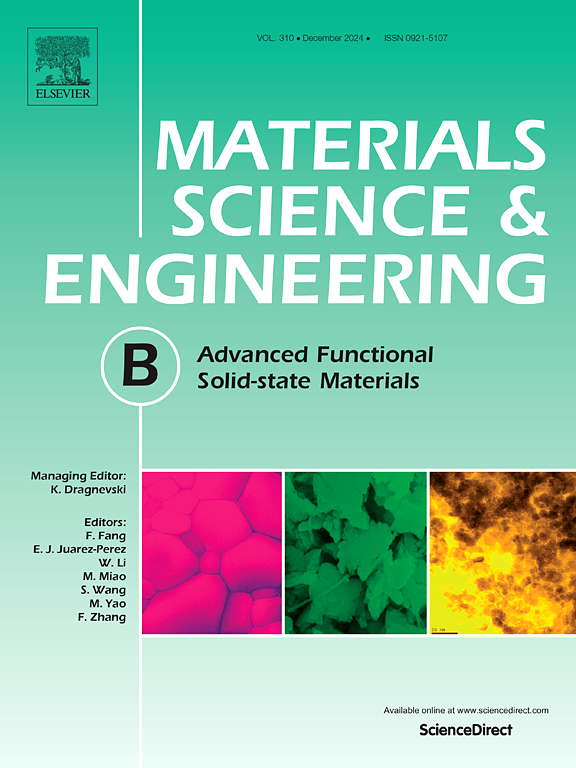Performance enhancement of Non-Toxic Cs2AgBiI6 based double perovskite photovoltaic cell via integration of a novel Mono-Walled carbon nanotube (MW-CNT) electron extraction layer
IF 4.6
3区 材料科学
Q2 MATERIALS SCIENCE, MULTIDISCIPLINARY
引用次数: 0
Abstract
This research explores the simulation and numerical modeling of a lead-free double perovskite photovoltaic cell using Cs2Ag0.85Bi0.15I6 as the light harvester. The design integrates a novel mono-walled carbon nanotube (MW-CNT) with metal oxides as the electron extraction layer (EEL) to enhance performance. A systematic study of eight carrier extraction layers, including EELs and hole extraction layers (HELs), was conducted. Key optimizations addressed thickness, bandgap, defect density, dopant concentration, temperature, resistance, capacitance, and Mott-Schottky contact behavior. The proposed MW-CNT-based EEL achieved a remarkable photovoltaic efficiency of 32.43 % and a short-circuit current density (Jsc) of 34.51 mA/cm2, nearing the theoretical Shockley–Queisser limit. With a bandgap of 1.2 eV, MW-CNTs provided optimal band alignment, efficient charge extraction, and a high open-circuit voltage (Voc) of 1.09 V. This work offers critical insights for advancing perovskite solar cell technology and inspires further experimental research.
通过集成新型单壁碳纳米管(MW-CNT)电子萃取层提高无毒Cs2AgBiI6基双钙钛矿光伏电池的性能
本研究探讨了以 Cs2Ag0.85Bi0.15I6 为光源的无铅双包晶光伏电池的模拟和数值建模。该设计集成了新型单壁碳纳米管(MW-CNT)和金属氧化物作为电子萃取层(EEL),以提高性能。对八个载流子萃取层(包括电子萃取层和空穴萃取层)进行了系统研究。优化的关键是厚度、带隙、缺陷密度、掺杂浓度、温度、电阻、电容和莫特-肖特基接触行为。所提出的基于 MW-CNT 的 EEL 实现了 32.43% 的显著光电效率和 34.51 mA/cm2 的短路电流密度 (Jsc),接近理论肖克利-奎塞尔极限。带隙为 1.2 eV 的 MW-CNT 提供了最佳的带排列、高效的电荷提取和 1.09 V 的高开路电压 (Voc)。
本文章由计算机程序翻译,如有差异,请以英文原文为准。
求助全文
约1分钟内获得全文
求助全文
来源期刊

Materials Science and Engineering: B
工程技术-材料科学:综合
CiteScore
5.60
自引率
2.80%
发文量
481
审稿时长
3.5 months
期刊介绍:
The journal provides an international medium for the publication of theoretical and experimental studies and reviews related to the electronic, electrochemical, ionic, magnetic, optical, and biosensing properties of solid state materials in bulk, thin film and particulate forms. Papers dealing with synthesis, processing, characterization, structure, physical properties and computational aspects of nano-crystalline, crystalline, amorphous and glassy forms of ceramics, semiconductors, layered insertion compounds, low-dimensional compounds and systems, fast-ion conductors, polymers and dielectrics are viewed as suitable for publication. Articles focused on nano-structured aspects of these advanced solid-state materials will also be considered suitable.
 求助内容:
求助内容: 应助结果提醒方式:
应助结果提醒方式:


